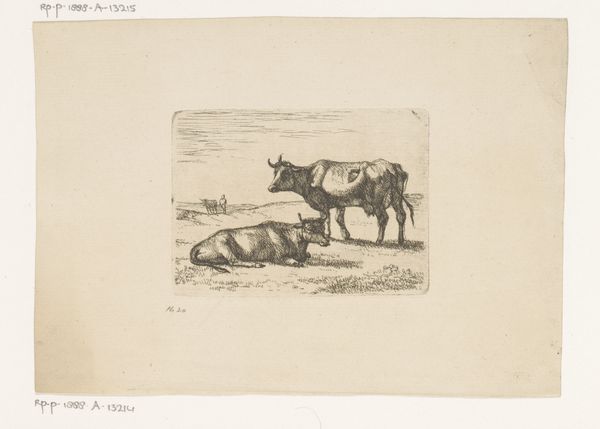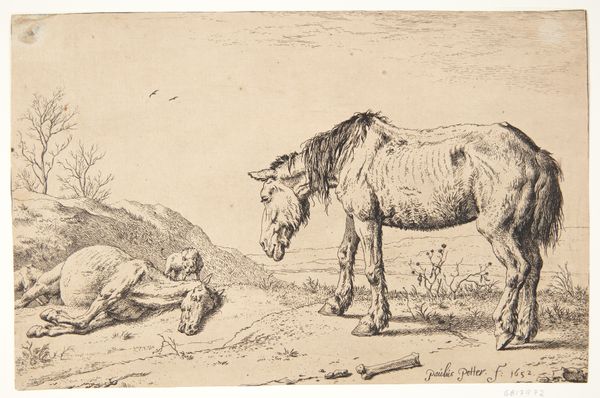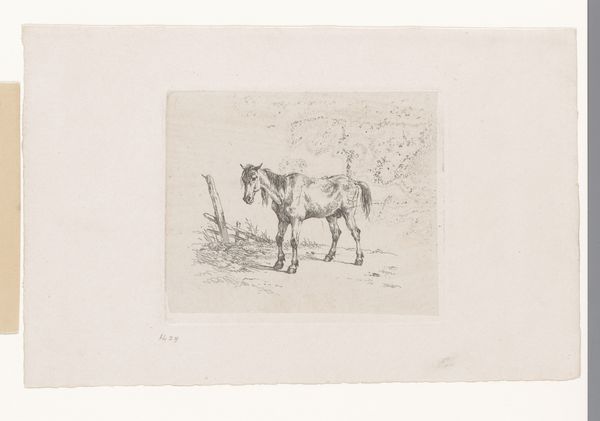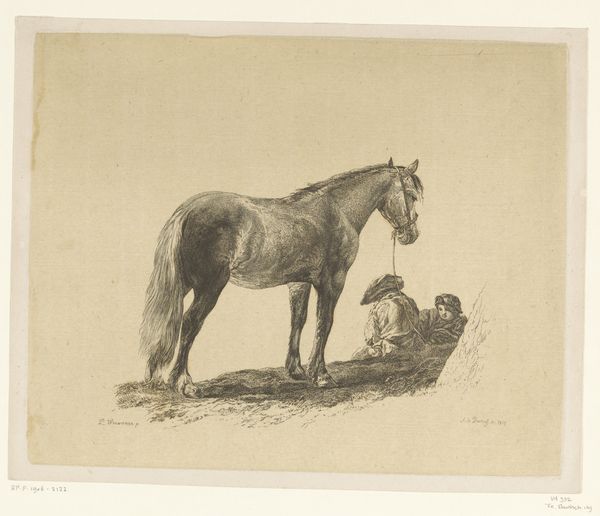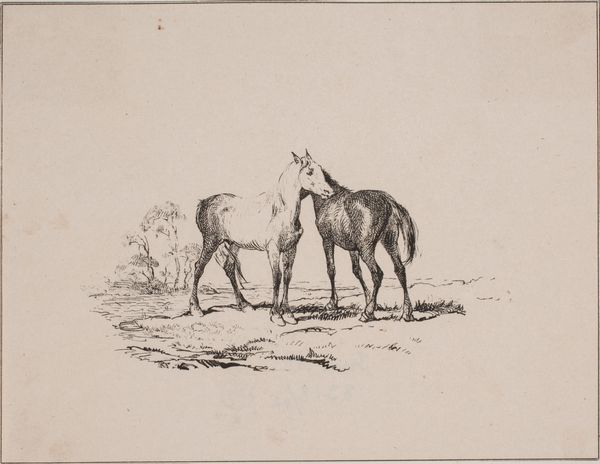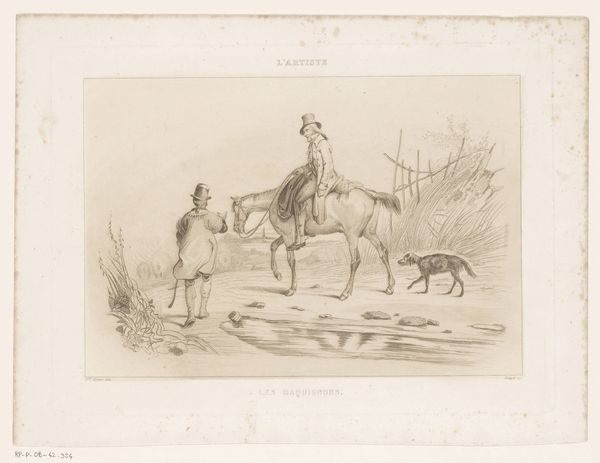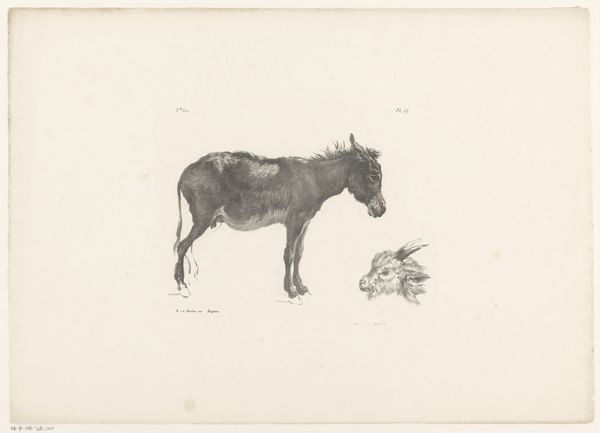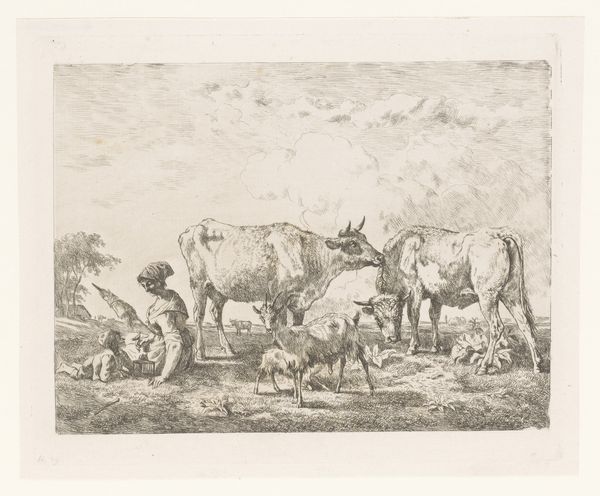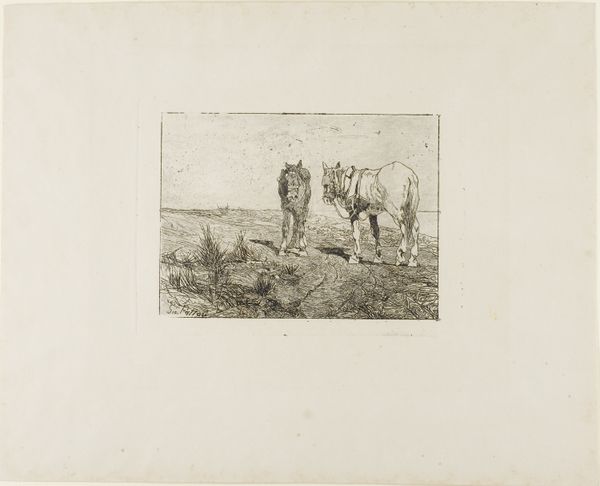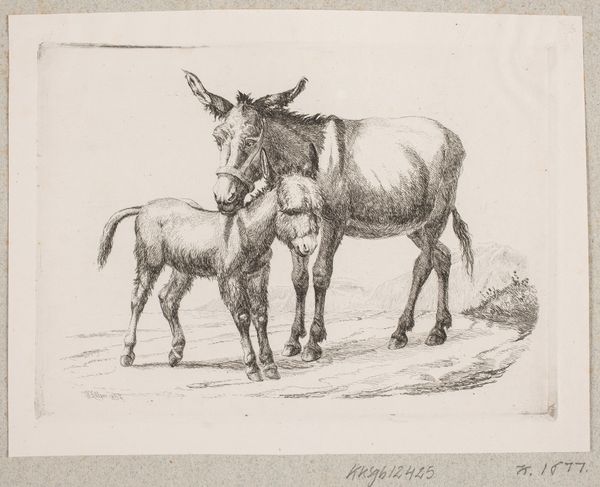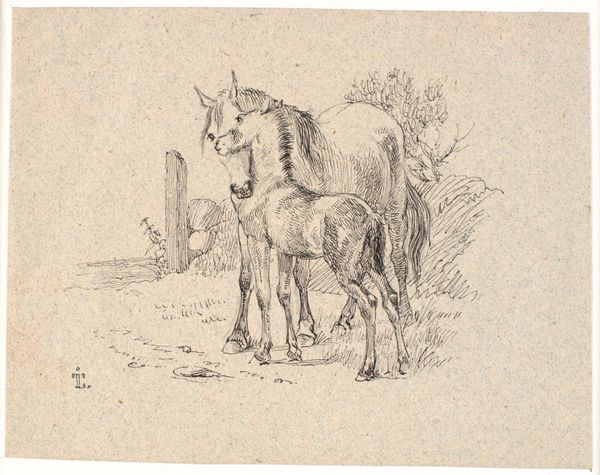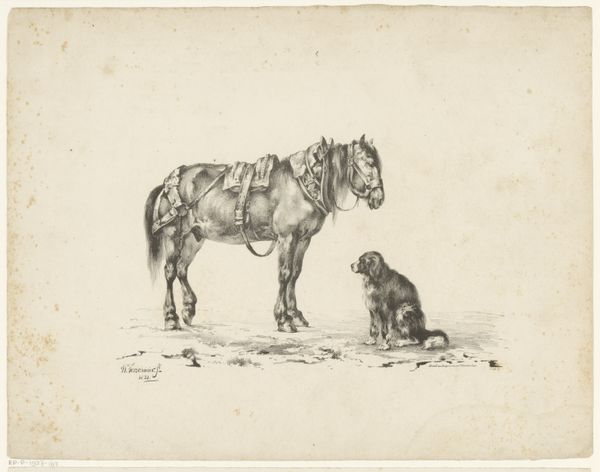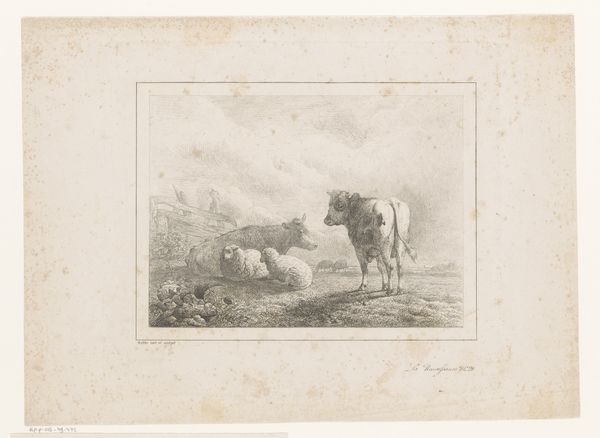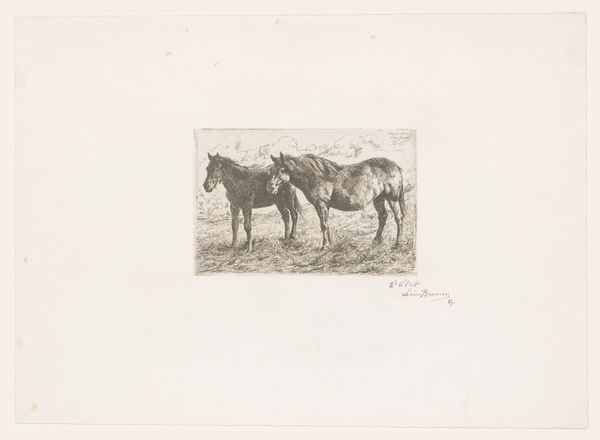
etching
#
portrait
#
pencil drawn
#
animal
#
etching
#
landscape
#
etching
#
horse
#
genre-painting
Dimensions: height 69 mm, width 96 mm
Copyright: Rijks Museum: Open Domain
Hendrik Jozef Franciscus van der Poorten created this etching, "Horse and Two Cattle," sometime in the early to mid-19th century. The etching process involves coating a metal plate with a waxy, acid-resistant material, and then drawing an image into that surface with a sharp needle. When the plate is exposed to acid, the drawn lines are etched into the metal. The plate is then inked, and the surface wiped clean, leaving ink only in the etched lines. Finally, the plate is pressed against paper to transfer the image. The resulting print has a distinctive character: a certain delicacy, and an even, all-over quality. In this case, the evenness makes the farm animals seem almost dreamlike, part of a continuum of landscape and atmosphere. Van der Poorten’s choice of etching, a relatively accessible printmaking technique, speaks to a desire to depict rural life and labor, embedding the work in a wider context of agrarian production. The very act of reproducing the image democratizes its consumption. It reminds us that the making of art, like the labor of farm animals, is always embedded in the social and economic conditions of its time.
Comments
No comments
Be the first to comment and join the conversation on the ultimate creative platform.
